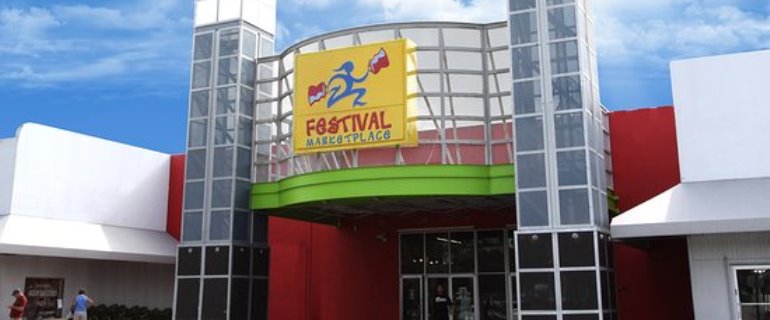Industrial outdoor storage has gone from being a niche in the industrial sector often owned by small private investors and mom-and-pop operators to a market estimated at $200 billion.
During the past three years, IOS has been growing dramatically and increasingly attracting the attention of—and significant outlays—from institutional investors and private equity firms.
“There is a lot of institutional capital chasing deals right now in the IOS space and it’s happened very quickly. I have two or three new groups calling me every week that I previously didn’t know about,” Zach Harris, a director at Stan Johnson Co. based in Tulsa, Okla., told Commercial Property Executive. “They’ve got committed capital and they’re ready to spend it. There’s definitely a rush to acquire product as quickly as possible.”
The demand for industrial storage space increased during the pandemic as e-commerce exploded and continues to be a significant part of the supply chain as more businesses seek locations for last-mile delivery and also want to be near ports and major industrial corridors. This hot commercial property type is mainly used for truck terminals, trailer storage, container storage, pallet storage and construction or heavy equipment yards. Trucking and truck parking are the heaviest users, particularly by third-party logistics companies.
Some of the biggest players in the IOS subsector include J.P. Morgan Global Alternatives and Zenith IOS, which formed a $700 million joint venture in February to create a national IOS storage platform and are aiming to build a portfolio worth $1 billion within the next two years. They kicked off their joint venture with the acquisition of four facilities in Dallas, including a nearly 27-acre property at 2118 California Crossing about 1 mile from Interstate 35 and 10 miles from Dallas Fort Worth International Airport.
Alterra Property Group closed its Alterra IOS Venture II LP fund in March with $524 million in total commitments, well beyond its original fundraising goal of $400 million. Limited partners in the fund included public and private pensions, endowments and foundations, asset managers, family offices and high-net-worth individuals. Alterra was an early entrant in the IOS market, launching its strategy in 2016.
Also in March, investor and developer Criterion Group and Columbia Pacific Advisors formed a joint venture aimed at deploying more than $2 billion in capital in IOS properties across the U.S. by late 2023. The joint venture’s first acquisition was a 41-property portfolio covering 520 acres across 11 states valued at $360 million. In June, Criterion Group announced the acquisition of eight IOS properties totaling 151 acres for an aggregate purchase price of $45.3 million. Criterion’s IOS portfolio now has 50 properties in 13 states valued at $550 million, including its first purchases in North Carolina and Virginia.
In June, Iconic Equities, a Miami-based real estate investment and development firm focused on industrial assets, and Leste Real Estate U.S., the real estate investment strategy of alternative investment manager Leste Group, formed a programmatic joint venture backed by about $150 million in institutional capital to acquire $400 million of industrial outdoor storage facilities across the U.S.
Iconic Equities—formed about 18 months ago—made IOS investments a core focus within the last six to nine months after focusing initially on more traditional industrial acquisitions and development in markets like Charleston, S.C., and Phoenix, according to Founder & CEO Tim Bishop. In Phoenix, the firm is set to break ground on approximately 1.2 million square feet and acquiring an additional 110,000 square feet in a forward takeout structure, .
The joint venture partners are looking for sites ranging from 5 to 15 acres in top U.S. logistics markets including New Jersey; Atlanta, Dallas, Los Angeles; the Bay Area; the Inland Empire; Nashville, Tenn.; Columbus, Ohio; Savannah, Ga., and South and Central Florida.
Their first acquisition was the $9.5 million acquisition of Garnett Storage, a 5-acre storage site in Coral Springs, Fla., which is leased to nearly 300 tenants seeking outdoor storage for boats, trailers, motor homes and commercial vehicles. The joint venture recently acquired a 6-acre IOS site in Fontana, Calif., in the Inland Empire and has deals in contract in the Inland Empire, Los Angeles and Columbus.
“Warehouse development in super infill locations near ports and in the major MSAs that typically sacrifice parking spark demand for IOS sites that can provide parking for trucks as well as storage for containers and pallets,” Bishop told CPE.
The Iconic team uncovers the opportunities for the joint venture, establishes the deal flow and structures the deal flow while Leste focuses on the capital market side of the transactions.
“From an institutional capital perspective, the reason this has become such an interesting niche over the last six months and really the last several years is it’s under penetrated by the institutions.” Leste Managing Director Josh Patinkin told CPE. “That coupled with really strong fundamentals in rent growth and tenant demand for these types of assets has come together to create a growing niche.”
Chasing Yield
There’s another important reason IOS has become increasingly popular with institutional investors. They are chasing higher yield.
“This strategy affords institutional capital the opportunity for higher yielding investments when their two biggest apprehensions right now are cap rate expansion and interest rate risk,” Bishop said. “When you get higher yield, you’re kind of insulated from that.”
The IOS market is not quite as mature as other real estate asset classes. Many of the properties are still owned by mom-and-pop operators and deals can be off-market or represented by local brokers rather than national brokerage platforms, Patinkin said.
“It’s not a very liquid market,” Bishop added. “There’s a lot of inefficiency in pricing and in evaluating risk and return and it’s especially extenuated in IOS because they’re smaller opportunities, they tend to have less institutional ownership and less of a national brokerage presence.”
Bishop and Patinkin also noted there are high barriers to entry in IOS due to a limited supply and many municipalities frown on these kinds of properties and are not likely to approve new uses in their communities.
“It’s one of the very few strategies where you can say supply is decreasing because a lot of these sites are very infill and tend to get redeveloped into other uses like traditional warehouse and there’s only so many of these permits that are out there,” Bishop said.
The IOS submarket in the Denver region has been growing organically over the past three years with a focus on infill sites close to the city, according to Cushman & Wakefield director Joey Trinkle.
“It’s harder to find buildings with outside storage and lower coverage in a strategic location close to the urban core that is also close to major interstate access,” said Trinkle. “There is higher demand from both the end user and investor sides to finding locations closer in.”
Rising Rents
Similar to the industrial sector as a whole, rents have also been rising in the IOS space, where leasing is priced by the acre rather than square footage.
“A few years ago, we were seeing deals done for outside storage without a building on site for about $5,000 an acre,” Trinkle told CPE. “Now we see $6,000 per acre triple net, which really speaks to the value. Outside storage properties bring a unique mix of users, some are local trucking and transportation companies that are local to Denver. But we also see national credit corporations looking for strategic sites. That’s really who these investors are targeting.”
Trinkle and Managing Director Matt Trone are currently marketing a 27-acre industrial storage yard/trailer site at 409 W 66th Ave. in central Denver recently acquired by IG Logistics, Imperium Capital’s industrial platform than owns and operates properties with large outdoor storage or transportation components, and Meadow Partners, an institutional middle-market real estate investor, for $19 million. IG Logistics launched last year with plans to invest $250 million in IOS properties and specializes in acquiring and developing infill assets in high barrier to entry, urban growth markets where demand for logistics real estate is driven by e-commerce, with a focus on last-mile facilities.
The central Denver property is a vacant lot that is zoned for outdoor storage and includes a 10,000-square-foot industrial building with about 6,500 square feet of office space, two drive-through service bays and 14 feet of clear height. It’s also situated near the confluences of I-76, I-25, I-270 and US 36 and near the BNSF Intermodal Facility and UP Intermodal Facility.
Trone described the former auto auction site as a “rare and very attractive piece of property” that can be divided down to three or four tenants, with options to share the building and office space, or some can just use the property for pure yard space.
In June, Trone and Trinkle and colleague Steve Hager represented a partnership of Biynah Industrial Partners and Platform Ventures in the $9.5 million acquisition of a 12.2-acre IOS property in central Denver from Prime Inc., in an off-market transaction. BIP, a Minneapolis-based private equity firm that invests in industrial real estate, and Platform, a Kansas City, Mo.,-based real estate investor and asset manager, plan to invest at least $150 million in IOS assets over the next two years.
The Cushman & Wakefield brokers are also marketing the property that has access to the major Denver highways and the two intermodal facilities.
“The previous owner was only using about 4 acres,”Trone said, “while the new owners plan to pave the unused land to maximize the space for interested tenants.”
They expect strong demand since development of infill locations over the past several years has displaced companies that need parking for trailers and heavy equipment.
“The renewal rate for tenants in the IOS sector is greater than traditional industrial properties,” Harris told CPE.
But they also tend to sign shorter leases, generally in the five- to seven-year range, which is attractive to institutional owners looking for value-add assets that will potentially see more frequent rent increases. With demand outpacing supply, owners also don’t need to worry about replacing tenants who leave. Triple net leases can often be found at IOS properties, where operating expenses in general are lower than traditional industrial properties.
Despite the increased investments in IOS in recent months, Leste’s Patinkin says the market is big enough to accommodate all the interested investors—at least for the next two or so years.
But Patinkin has advice for those considering investments in IOS: “You have to have really good access to capital because the credit markets are very young in IOS and there’s not a lot of participation yet. So, you have to navigate that. You have to be fairly deep pocketed and have support. You’re not going to get competitive individual small loans on an asset-by-asset basis. You have to know how to access the broader capital markets to navigate this strategy.”
Source: Commercial Property Executive




